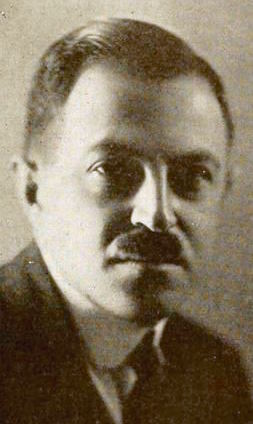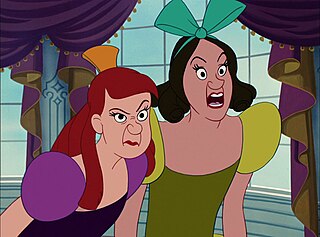"Cinderella", or "The Little Glass Slipper", is a folk tale with thousands of variants that are told throughout the world. The protagonist is a young girl living in forsaken circumstances that are suddenly changed to remarkable fortune, with her ascension to the throne via marriage. The story of Rhodopis, recounted by the Greek geographer Strabo sometime between 7 BCE and 23 CE, about a Greek slave girl who marries the king of Egypt, is usually considered to be the earliest known variant of the Cinderella story.
Silly Symphony is an American animated series of 75 musical short films produced by Walt Disney Productions from 1929 to 1939. As the series name implies, the Silly Symphonies were originally intended as whimsical accompaniments to pieces of music. As such, the films usually did not feature continuing characters, unlike the Mickey Mouse shorts produced by Disney at the same time. The series is notable for its innovation with Technicolor and the multiplane motion picture camera, as well as its introduction of the character Donald Duck making his first appearance in the Silly Symphony cartoon The Wise Little Hen in 1934. Seven shorts won the Academy Award for Best Animated Short Film.

Fleischer Studios was an American animation studio founded in 1929 by brothers Max and Dave Fleischer, who ran the pioneering company from its inception until its acquisition by Paramount Pictures, the parent company and the distributor of its films. In its prime, Fleischer Studios was a premier producer of animated cartoons for theaters, with Walt Disney Productions being its chief competitor in the 1930s.

Max Fleischer was a Polish-American animator, inventor, film director and producer, and studio founder and owner. Born in Kraków, Poland, Fleischer immigrated to the United States where he became a pioneer in the development of the animated cartoon and served as the head of Fleischer Studios, which he co-founded with his younger brother Dave. He brought such comic characters as Koko the Clown, Betty Boop, Popeye, and Superman to the movie screen, and was responsible for several technological innovations, including the rotoscope, the "follow the bouncing ball" technique pioneered in the Ko-Ko Song Car-Tunes films, and the "stereoptical process". Film director Richard Fleischer was his son.

Betty Boop is an animated cartoon character designed by Grim Natwick at the request of Max Fleischer. She originally appeared in the Talkartoon and Betty Boop film series, which were produced by Fleischer Studios and released by Paramount Pictures. She was featured in 90 theatrical cartoons between 1930 and 1939. She has also been featured in comic strips and mass merchandising.

Mae Questel was an American actress. She was best known for providing the voices for the animated characters Betty Boop, Olive Oyl and numerous others.

Cinecolor was an early subtractive color-model two-color motion picture process that was based upon the Prizma system of the 1910s and 1920s and the Multicolor system of the late 1920s and the 1930s. It was developed by William T. Crispinel and Alan M. Gundelfinger, and its various formats were in use from 1932 to 1955.
Color Classics are a series of animated short films produced by Fleischer Studios for Paramount Pictures from 1934 to 1941 as a competitor to Walt Disney's Silly Symphonies. As the name implies, all of the shorts were made in color format, with the first entry of the series, Poor Cinderella (1934), being the first color cartoon produced by the Fleischer studio. There were 36 shorts produced in this series.

The ugly stepsisters are characters in the fairy tale and pantomime, Cinderella. They are the daughters of Cinderella's wicked stepmother, who treat her poorly. The "ugly stepsisters" have been in variations of the story from as early as researchers have been able to determine.
Stopping the Show is a 1932 Fleischer Studios animated short, directed by Dave Fleischer. While it is not the first appearance of Betty Boop, it is the first short to be credited as "A Betty Boop Cartoon."
Betty Boop's Ups and Downs is a 1932 Fleischer Studios animated short film, starring Betty Boop.
I Heard is a 1933 Pre-Code Fleischer Studios animated short film starring Betty Boop, and featuring Koko the Clown and Bimbo. The cartoon features music by and a special guest appearance from jazz musician Don Redman and his Orchestra.
Red Hot Mamma is a 1934 Fleischer Studios Betty Boop animated short directed by Dave Fleischer.
No! No! A Thousand Times No!! is a 1935 Fleischer Studio animated short film, starring Betty Boop.
Betty Boop's Trial is a 1934 Fleischer Studios animated short film, starring Betty Boop.
Betty Boop's Life Guard is a 1934 Fleischer Studios animated short film starring Betty Boop.
Betty Boop's Little Pal is a 1934 Fleischer Studios animated short film starring Betty Boop, and featuring Pudgy the Puppy.

Cinderella is a 1914 silent film starring Mary Pickford, directed by James Kirkwood Sr., produced by Daniel Frohman, and released by Famous Players Film Company. The film is based upon the fairy tale Cinderella. The film was released on Blu-ray & DVD as a bonus feature from the DVD of Through the Back Door (1921). It was previously released on DVD by Alpha Video.
Bonnie Poe was an American actress and voice artist, best known for providing the voice for the Fleischer Studios animated character Betty Boop beginning in 1933, starting with the Popeye the Sailor series and featuring in a dozen cartoons. She voiced her in a live-action segment on the special Hollywood on Parade No. A-8, performing a skit with Bela Lugosi providing a portrayal of Count Dracula.
Honest Love and True is a 1938 Fleischer Studios animated short film starring Betty Boop and her erstwhile boyfriend Fearless Freddy.







